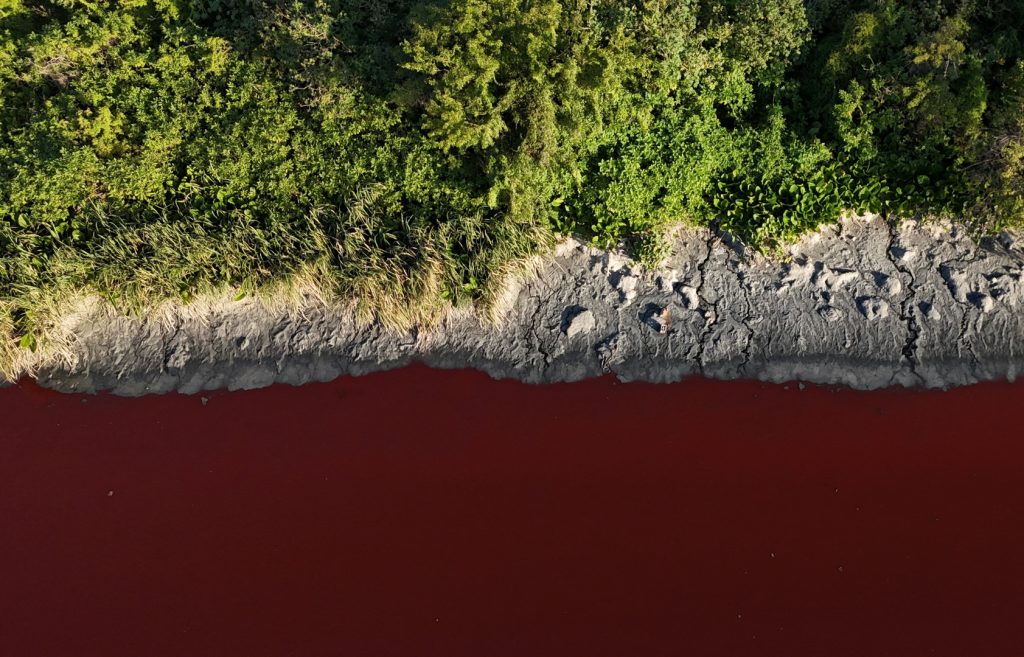A River in Argentina Turns Blood Red: Unraveling the Mystery
Introduction: A Grim Sight Unfolds
In a bizarre and alarming environmental phenomenon, a river in Argentina recently turned a blood-red color, shocking locals and sparking widespread concern. The sudden transformation of the water’s hue has left scientists, authorities, and residents scrambling to identify the cause and assess the potential consequences. While the sight of a river turning red might seem like something out of a horror movie or an apocalyptic prophecy, it is, unfortunately, a real-world issue that demands immediate attention. This article delves into the possible reasons behind this eerie phenomenon, its impact on the environment, and the steps being taken to address the crisis.
The Possible Causes: Pollution or Nature?
The most immediate suspicion surrounding the river’s transformation is environmental pollution. Argentina, like many countries, has faced challenges related to industrial waste, agricultural runoff, and improper waste disposal, all of which can contaminates water bodies. Red discoloration in rivers is often linked to pollutants such as heavy metals, chemicals, or excess nutrients from fertilizers, which can trigger harmful algal blooms. These blooms, while sometimes naturally occurring, can be exacerbated by human activities that disrupt the ecosystem.
However, the red color could also be attributed to natural causes. Certain types of algae or sediments can cause the water to take on a reddish hue, especially after heavy rainfall or seasonal changes. While these natural processes are typically harmless, the combination of natural and human-induced factors could amplify the effect, leading to the dramatic change observed in the river. Scientists are conducting tests to determine whether the discoloration is a result of pollution, natural phenomena, or a combination of both.
The Environmental Impact: A Call to Action
Regardless of the cause, the sudden change in the river’s color has raised significant environmental concerns. Rivers are lifelines for ecosystems, providing water for flora and fauna, as well as for human consumption, agriculture, and industry. A sudden alteration in water quality can have devastating effects on aquatic life, leading to the death of fish and other organisms that depend on the river for survival.
The red discoloration could also indicate a broader issue of water pollution in the region. If industrial or agricultural waste is the culprit, it may signal a failure in enforcement of environmental regulations or inadequate waste management systems. This not only threatens the immediate ecosystem but also poses risks to human health, as contaminated water can be used for drinking, irrigation, or recreational purposes. The situation serves as a stark reminder of the delicate balance of nature and the urgent need for sustainable practices.
Cultural and Social Reactions: A Community in Shock
The sudden and dramatic change in the river’s color has also had a profound impact on the local community. For many residents, the river is not just a natural resource but a cultural and spiritual symbol. Generations have relied on it for their livelihood, and its condition is deeply intertwined with their identity and way of life. The sight of the blood-red water has evoked fear, confusion, and frustration among locals, who are now left wondering about the future of their environment.
Social media has been flooded with images and videos of the river, drawing attention to the issue and sparking outrage. Many are calling for accountability and immediate action from authorities to address the crisis. The situation has also highlighted the importance of environmental education and community involvement in protecting natural resources. As the investigation into the cause of the discoloration continues, the affected communities are holding their breath, hoping for a swift resolution that will restore their river to its former glory.
Moving Forward: Solutions and Preventative Measures
To address the crisis, local authorities and environmental agencies have launched an investigation into the river’s condition. Water samples are being analyzed to identify contaminants, and efforts are being made to determine the source of the pollution or natural phenomenon causing the red color. Meanwhile, measures are being taken to mitigate the immediate impact, such as monitoring water quality, restricting access to the affected areas, and providing alternative water sources for nearby communities.
Preventative measures are also being discussed to avoid similar incidents in the future. These include stricter enforcement of environmental regulations, improved waste management systems, and public awareness campaigns about the importance of protecting water resources. Collaborative efforts between government, businesses, and local communities will be essential to ensuring the long-term health of the river and the ecosystem it supports.
Conclusion: A Wake-Up Call for Us All
The case of the blood-red river in Argentina is a stark reminder of the fragility of our environment and the consequences of human actions. While the exact cause of the discoloration is still under investigation, the incident serves as a wake-up call for individuals and societies to reflect on their relationship with nature. It emphasizes the need for sustainable practices, responsible resource management, and collective action to protect our planet’s vital resources.
As the world continues to grapple with environmental challenges, the blood-red river stands as a symbol of the urgent need for change. By learning from this incident and taking proactive steps to address the root causes of environmental degradation, we can work toward a future where such dramatic and alarming phenomena are a rarity rather than a reality. The health of our rivers, and the planet as a whole, depends on it.












